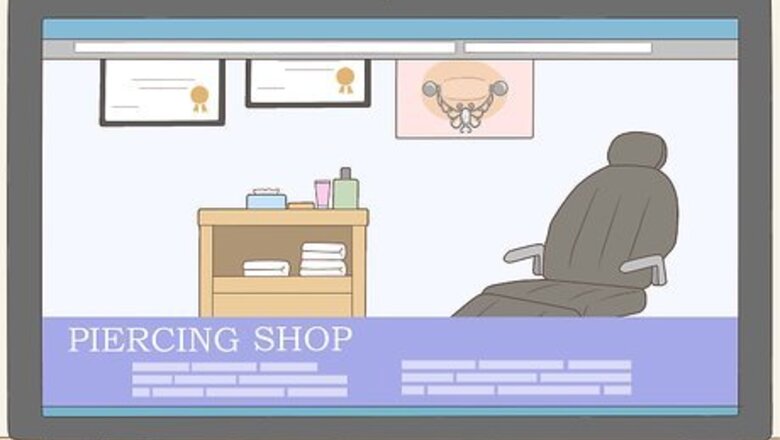
views
- Choose a reputable piercing parlor with good customer reviews, and visit before making an appointment to verify its reputation.
- Choose from a horizontal, vertical, or diagonal placement. The piercer will insert a needle through your nipple, followed by your jewelry.
- Wait at least 6 weeks for the piercing to heal completely and clean the area twice a day with saline solution.
Choosing a Piercer

Research local piercing parlors to learn about your options. Do an online search to find parlors in your area. Visit the parlor’s website to learn about their credentials, experience, and the piercers who work there. Check out their prior work and pictures of the parlor to see if it looks like a professional establishment. If there are multiple parlors in your area, research several options to find the right one for you. Type the parlor’s name into your search engine to see if any news articles come up. This will help you find out about problems they may have had in the past.
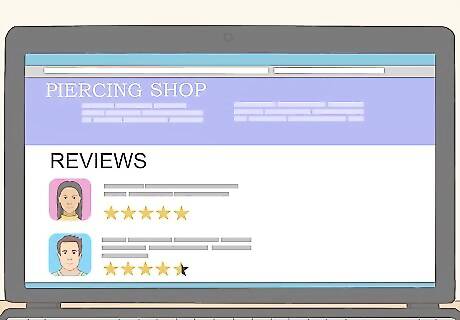
Read reviews from prior customers to make sure they’re satisfied. Check out the reviews on the parlor’s website and social media accounts. Then, check sites like Yelp for additional reviews. Read multiple reviews to see if clients appear to be satisfied with the parlor. If you see bad reviews, look at what the clients didn’t like to see if it might be a red flag. Multiple bad reviews may be a sign that you need to look into other options. Pro tip: If you have friends who have nipple piercings, ask them about where they went and what the process was like.
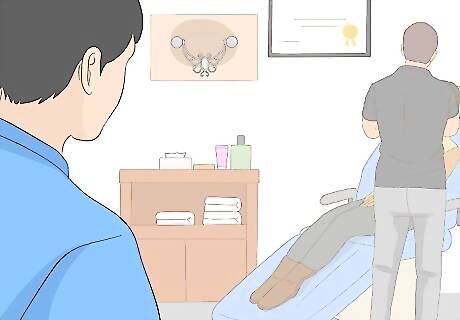
Visit the parlor you plan to use before you make an appointment. Look around the parlor to make sure it looks like a professional establishment. Talk to the people who work there to see if they sound knowledgeable. Additionally, ask if you can watch them perform a piercing to make sure they wash their hands and use sterile instruments. Here are some things to look for: A clean and well-lit parlor The proper licenses An Association of Professional Piercers (APP) membership Sterile materials and practices (e.g., forbidding the use of piercing guns) An autoclave for sterilization
Do nipple piercings hurt?
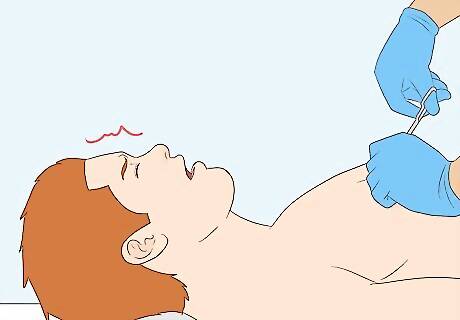
Yes—be prepared for it to hurt a little bit. Nipple piercings can be painful, but the pain level depends on the person. From an anatomical perspective, a person’s nipples are filled with hundreds of different nerve endings. Getting a nipple piercing essentially involves a piercer sticking a needle through those nerve endings, which will definitely hurt to some degree. However, every person has a different pain tolerance, so there’s no universal answer to how much nipple piercings will hurt. Some people experience little pain at all, while others find nipple piercings to be more painful than other types of piercings. It really depends on the person!
How much do nipple piercings cost?

Expect to pay upwards of $50 for a nipple piercing. At the end of the day, the individual price points come down to the studio you visit. However, it’s important to note that most studios charge a separate piercing and jewelry fee—so, when you’re browsing their website, add both of these fees together to get an idea of your final cost. If you plan on getting both nipples pierced at the same time, multiply the studio's combined piercing and jewelry fee by 2. Studios will likely offer jewelry at different price points. So, if you want to shell out for something fancy, you totally can, but there will likely be a budget-friendly option as well.
How to Pierce Your Nipples
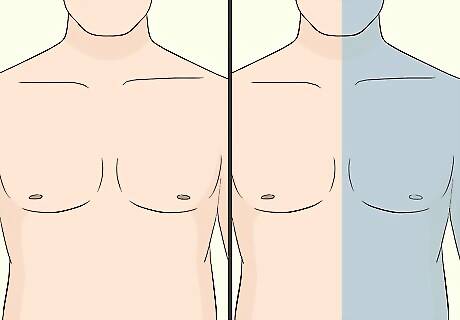
Let your piercer if you’d like one or both nipples pierced. If you want both nipples pierced, you can choose to do them at the same time. In fact, some nipple piercing veterans recommend this, given the potential pain factor of the piercing. If the experience ends up being painful, you might not want to go back to get your other nipple pierced. It might be cheaper to pierce both nipples at the same time than to do them separately. Talk to your piercer to find out if they’ll charge you a lower fee to do both piercings in the same appointment.
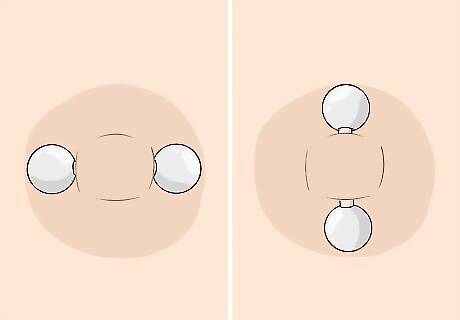
Tell the piercer if you want a horizontal or vertical piercing. Horizontal piercings are popular, and they go sideways in your nipple. However, you might prefer a vertical piercing that goes up and down, or a diagonal piercing that goes through the nipple at an angle. Whatever you decide, let your piercer know before the procedure. If you’re not sure which you prefer, ask your piercer for advice or look at pictures of other nipple piercings.
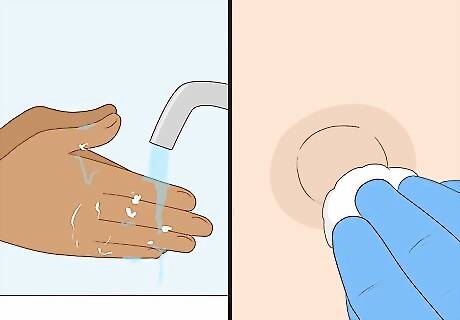
The piercer washes their hands and cleans the area. Before they begin, the piercer washes their own hands to ensure cleanliness. Then, they’ll clean the skin around the nipple to make sure the piercing is as sanitary as possible.
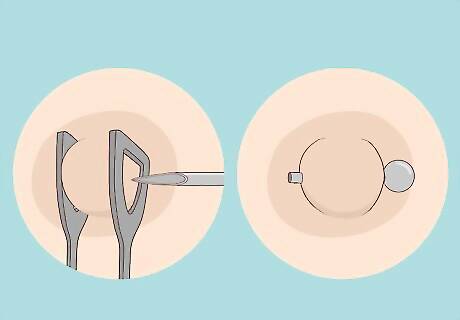
The piercer inserts a needle, followed by the jewelry. Beforehand, the piercer may use a sterile marker to mark off where the hollow needle will go. Using a set of clamps, they’ll hold up the area as the piercer asks you to inhale deeply. At this point, the piercer will insert the needle through your nipple, followed immediately by a piece of jewelry.
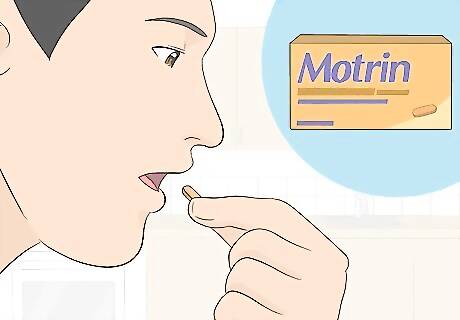
Take an over-the-counter pain reliever if you’re in pain. It’s normal to feel discomfort during the piercing, but it should subside quickly. If you’re still feeling uncomfortable, take an over-the-counter pain reliever like nonsteroidal anti-inflammatory drugs (NSAIDs), such as ibuprofen (Motrin, Advil) and naproxen (Aleve), or acetaminophen (Tylenol). Use the pain reliever as directed on the label. Keep in mind that over-the-counter NSAIDs can make you bleed a little more.
Nipple Piercing Aftercare
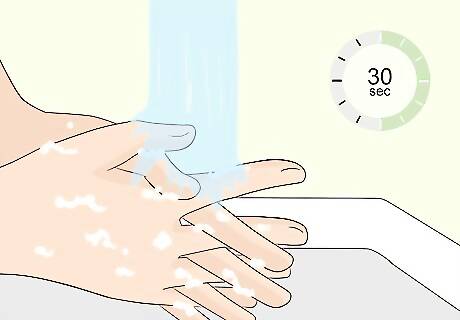
Wash your hands with soap and warm water. Your hands can harbor germs and bacteria that might cause an infection. Wet your hands under warm water, then apply a mild, fragrance-free soap to your palm. Lather the soap for 30 seconds, then rinse your hands clean. Dry your hands off with a clean towel. Make sure the towel you use is clean and dry. A dirty towel may transfer germs back onto your hands.
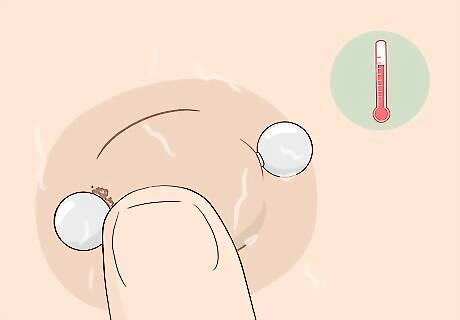
Use warm water to remove any crusty material from around the piercing. Run a stream of warm water over your nipple to soften the crusty material. Then, use your fingers to flake it off of both your nipple and your jewelry. Be gentle and avoid pulling at your skin.
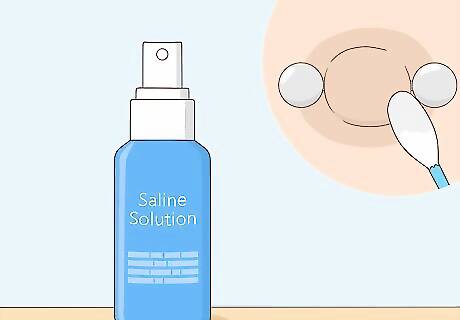
Clean off the piercing with a saline solution. Spritz a little saline solution onto a clean cotton swab, dabbing it around the piercing. Rinse off the piercing with water afterward to prevent the piercing from drying out, and then pat it dry. To make your own saltwater solution, dissolve ¼ teaspoon of sea salt or 1 teaspoon of table salt in 8 oz of warm water. Use a plain saline solution with .09% sodium chloride as the sole ingredient, rather than using a contact lens solution.
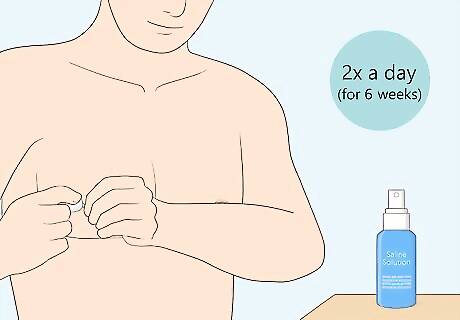
Clean the piercing twice a day for the first 6 weeks. As a general rule of thumb, take time to clean your piercing when you wake up and before you go to bed. Use the same saline solution to sanitize your piercing site and keep it as clean as possible. Whenever you shower, do your best to clean the nipple piercing at the very end after the rest of your body is clean. Use a clean towel after each shower because dirty towels can harbor bacteria. It’s important to keep bacteria away from your piercing as it heals.
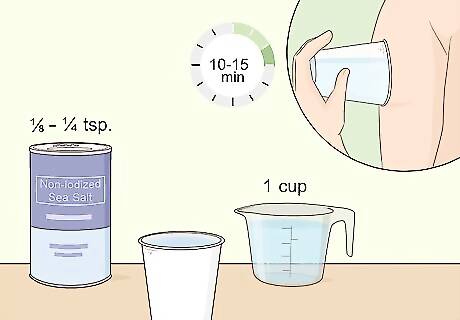
Soak the piercing in a salt solution 1-2 times daily to promote healing. To make a salt solution, dissolve 1/4 tsp (1.42 g) of sea salt in 8 fl oz (240 mL) of warm distilled water. Pour the solution into a cup, then submerge your nipple into it. Soak for 10 minutes, and then rinse your nipple clean with fresh water. Pat it dry with a clean paper towel.
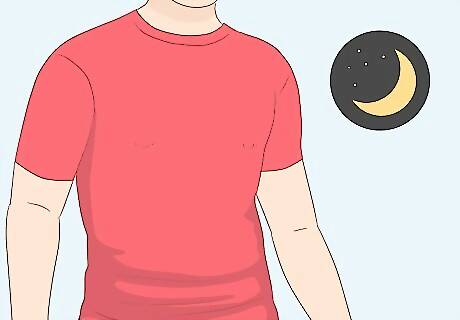
Protect the piercing at night so it doesn’t get pulled out. Before slipping into bed, slip into a clean, tight-fitting cotton shirt to help your piercing feel a little better. Alternatively, wear a tight-fitting sports bra before heading to bed.

Avoid using antiseptics because they slow down healing. Don’t use any over-the-counter products for wound care on your piercing. These products can slow down the healing process or irritate your skin. Here are some things to avoid: Rubbing alcohol Hydrogen peroxide Bacitracin
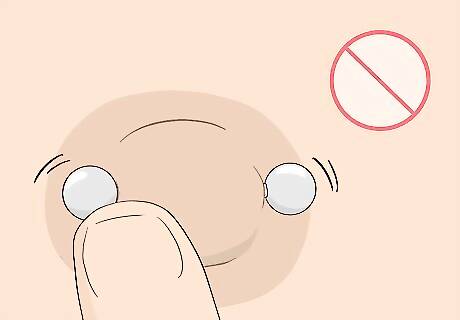
Do not touch or play with the piercing. It is important that you avoid touching or playing with the piercing as much as possible during the healing process. Bacteria from your hands can easily enter the wound and cause the piercing to become infected. Don't allow your partner to touch or lick your pierced nipple. If you absolutely have to touch the piercing, remember to wash your hands thoroughly with antibacterial soap first or wear gloves. Avoid twisting or turning the jewelry in the piercing for the first couple of months, except when cleaning. Twisting the jewelry aggravates the piercing and slows down healing. Be careful when playing sports or during any physical activity, as the jewelry may be torn from the piercing if knocked against too roughly. Cover the piercing with a waterproof wound sealant bandage if you plan on going swimming. Do not remove the ring or barbell from the piercing until it has fully healed.
Healing Time
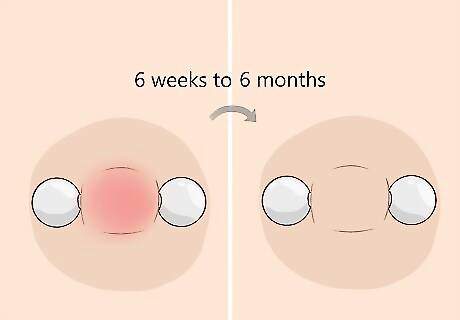
Allow 6 weeks to 6 months for the piercing to heal. With proper care, nipple piercings usually heal in about 6 weeks to 6 months. Your nipple will likely feel tender for the first few days, but it’ll get more comfortable as time progresses. Continue to care for your piercing until it’s fully healed. Keep in mind that some people may take up to a year to fully heal. Additionally, it’s possible that your nipple will reject the piercing. If your nipple keeps getting infected or has a red streak, it’s likely rejecting the piercing. See your piercer or a doctor in this case.
Jewelry & Metals
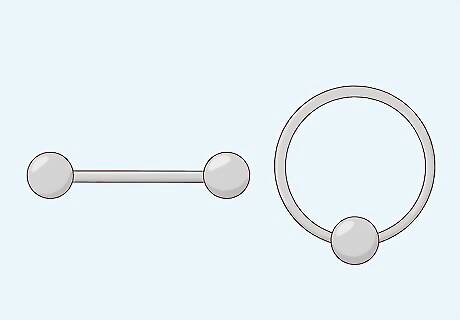
Nipple rings or bars are common jewelry used for nipple piercings. Bars are a common jewelry style used for a variety of different piercings, including nipples—they’re essentially a thin, straight piece of metal that’s secured with metal balls on each end. Rings, on the other hand, are circular pieces of jewelry that go through the nipple. Gauge is the measurement used by professional piercers when discussing the width of a piercing. The larger the gauge, the more narrow the jewelry is—for instance, a 20-gauge piece of jewelry would only be .81 mm wide, while a 6-gauge piece would be 4.12 mm. For body piercings beneath the neck area, professional piercers advise going no larger than 14-gauge.

Internally threaded or threadless jewelry is the industry standard. Professional piercers don’t use externally threaded jewelry, or jewelry where the screwing mechanism is visible on the outside of the main piece. External threading can hurt the piercing area when you slide it in—for that reason, pro piercers only use internally threaded jewelry (where the screwing mechanism is on an attaching ball or along the inside of the main bar/ring).

Nipple jewelry is often made with high-quality steel, titanium, or gold. The APP has a very strict set of guidelines for what types of metals are allowed to be used for body jewelry. Steel that’s considered ASTM F-148 or ISO-5822-1 complaint makes the cut, as well as titanium labeled ASTM 5136 or ISO 5832-3 compliant. Certain types of gold (typically 14-karat or higher), a nickel-free platinum alloy, PTFE, and a few other materials also make the cut. Nickel is frowned upon when it comes to body jewelry—if a piece of jewelry has nickel in it, skip over it and look for something else.
Can you breastfeed with a nipple piercing?
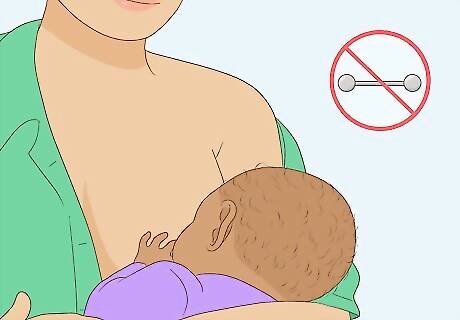
Yes, but it’s best to remove your nipple jewelry before doing so. While it’s generally not a great idea to remove nipple jewelry (in case the piercing closes up), it’s actually a safety hazard to nurse with it in, as your little one could potentially choke on the jewelry if it accidentally comes off. Whenever you remove or replace your jewelry, take extra care to wash your hands and clean your jewelry diligently to prevent infection. Ask your doctor or a lactation specialist for advice if you don’t feel comfortable breastfeeding with your nipple piercing.
















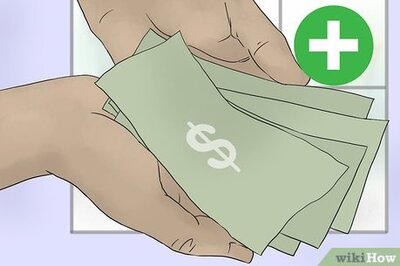

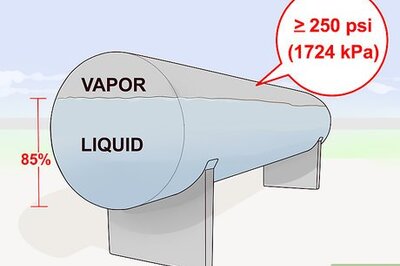
Comments
0 comment